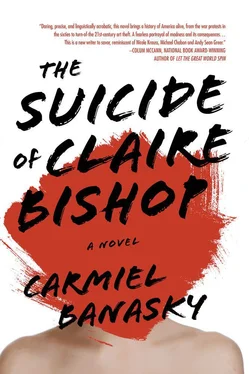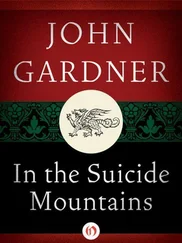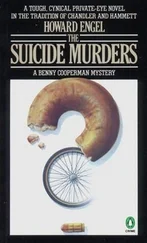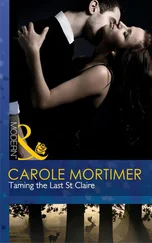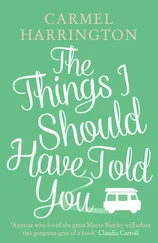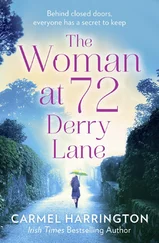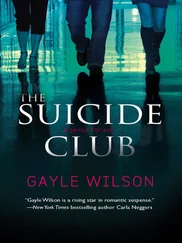The door opens behind me. With the side of my palm, I slide the pills back into the bottle, but one slips off and bounces on the tile floor.
It’s Orange-Socks Dave, looking at me in the mirror. I turn to him, the bottle in my fist behind my back. The pill landed just a few inches from my foot but I can’t pick it up with him here.
He smirks at me. “Making yourself pretty for date night?”
The other eight guys in their cubicles don’t bother about me too much, unless they’re trying to scare me about the Homeland Security Advisory. They keep a live color-coded Terrorist Threat Level on a few of their monitors. They think it’s funny. When they raised the Threat Level from Yellow to Orange the other week, Dave started wearing only orange socks. He either has a bunch of pairs or wears the same ones every day. I made my own Sesame Street version of the threat level system, Big Bird for yellow, Oscar, etcetera. The guys liked that.
“No.”
He stops smiling. “It was a joke,” he says. “Because you’re looking in the mirror?”
“Okay,” I say and leave the bathroom, the pill still resting on the floor. One obvious point in the category of lowering my dosage.
A decades-long plunge. The woman falls elegantly. Each frame, a segment of the woman’s fall, disconnected like a shattered mirror. She changes as she falls, but not in any pattern I can discern. She is old in one frame, young in the next, echoing, perhaps, a life flashing before one’s eyes — if a person’s whole life is one giant fall.
I can tell it’s Nicolette’s immediately. The hogs-hair brushstrokes. The untrimmed fan brush edging the faces. The faces. So many faces of the same woman, unknown to me but familiar.
In the gallery and the hall outside, there are no Hasidim in sight. Their absence makes me nervous. Are they trying to stay scarce?
The gallery-sitter — not a Hasid — stands behind me. I fiddle with my camera phone and put it back in my pocket and he glares at me.
The woman, dead in the street, stretches her head toward me; she is spilling out of the painting. Her chin and chest pushed out, her eyes closed, sensual even in death. She’s so close to me I can almost touch her, catch her. Her left arm is outside of the painting, unseen, reaching above her, maybe reaching for her true self — though if you’re dead, there ends truth.
A piece from the corner of the painting is missing. The line is careful, like it had been deliberately cut out. Only the N of her name remains.
The gallery-sitter sees me looking at the missing corner. “The integrity of the painting remains intact.” He sneers in a way that makes me want to flick his ears. As if I’m not good enough to be in his gallery. He’s trying to seem Yellow-level dangerous but he’s not an inch above Green. He’s afraid of me.
I want to ask him where the Hasidim are. “What’s it called?” I say.
He walks around the big glass desk in the center of the room and pushes a three-ringed binder across it. Then he sits down in his big ergonomic throne. In the binder, one laminated page is dedicated to each of the six paintings in the room, all by different artists, with little blurbs and photos of the painters next to thumbnails of their work.
Nicolette’s is aptly called The Suicide of _____. But there’s no photograph of her, no artist name. The blurb says the painting was donated anonymously, and that mystery shrouds the painter. It says the work had been wrongly attributed to a contemporary artist, but it has since been dated to the late fifties or early sixties.
“But Nicolette Bernhardt wasn’t born then,” I say.
The man raises his eyebrows, shrugs. “She came in herself and made a big event of denying it was hers. It’s an impressive work with or without her name attached.” And he nods like that’s the end of the discussion.
Truth encroaches like a shadow. What if I became the inverse of myself? What would I look like? What would become of Chinatown or the Bronx? Or my sister?
“There’s been a mistake.”
He grits his teeth. “Okay.”
It’s hers all right. Doesn’t matter what they say or what she said. She was always protective about what she put her name on. She’d say that her masterpieces weren’t hers all the time, that they were another Nicolette’s — the Nicolette she was six months or a year ago.
But this feels darker than that. Could she be in trouble? The painting is a link to her, and disavowing it severs that link. It is hers. I can tell by the way it looks at me. And speaks to me with this controlling voice just like Nicolette’s. By the softness you could mistake for cruelty. Someone could be after her, and she’s gone into hiding.
But the 1950s. It’s not possible. Tapping my finger on the desk, I ask, “Who was the anonymous donor?”
He grins. “I have no idea. It was anonymous.”
He knows.
I want to talk about the wilderness. Negative space would turn solid. Solid would become open. I would walk through buildings but not on the street. I would sit inside a brick. My insides would float around me in orbit. My muscles on the outside of my skin and my brain the center pulling like the sun.
“Who’s the lady in the painting?” I ask.
“An invention of the artist, most likely.” So quick to answer. Almost rehearsed.
“You know, it’s called The Suicide , but it could easily be called The Murder . Who’s to say someone didn’t push her off the bridge?” But the gallery man is shrugging over his cell phone, a little sad at some call that never came, probably his girlfriend ditching him for someone more attuned to an artist’s intentions.
Nicolette never painted from her imagination, and she certainly never invented a subject. When she painted, she painted what was there but lost to obscurity. That’s what she always said. Everything is what it is, not what it symbolizes. There are no symbols. “No ideas but in things.” I am me, but I am also a thousand things behind me. The falling woman existed, exists. But is she alive or dead?
I tell none of this to the gallery-sitter, who sits on in his cushy office chair, looking at me askance. I don’t tell him that they’ll come to me someday to help write her biography. And I don’t tell him this painting is the only thing I don’t know about her.
I get out my camera phone and pretend he’s not the only one waiting for a call, and I take three photos of the painting, and then I leave the room. I don’t say goodbye because I promise myself, and the painting, that I’ll visit at least once a week like it’s a sick old woman.
The stairs are at the end of the hall, but the elevator opens just as I’m walking past, it knew I was coming. It’s a service-type elevator and I step inside beside a man, in his sixties maybe, with a funny moustache and thick gray hair, and the ground-floor button is already lit. The doors close. A black garbage bag leans against his shins, blending into his black pants. And he has on a janitor-type blue button-up open at the neck so some silver chest hair shows. The old elevator eases down from the ninth floor.
That’s easy enough information to break down. I know this man in a split second, have him figured out. Still, my deductive skills have been off. I have always been a skilled detective, but I can’t draw connections like I once could. Ever since I started the pills. I don’t want to see all connections because sometimes I make them up and can’t tell the difference, I have learned that. But I’m always missing something now. Zyprexa blindness.
The man’s graying moustache wraps around his mouth. He has a soft, chubby face. Maybe he was okay-looking once but it’s hard to say. The veins in his forehead come together just above the bridge of his nose in a V. It seems to me like he must always be frowning, that his mouth can’t do any other thing, until he smiles at me, big and joking, and then it seems like he can’t do any other thing but smile. He shows me his yellowing teeth. He must smoke a lot. Then his face is softer, melting as if in recognition. Does he know me?
Читать дальше
